The “Buy American” Campaign: Economic Nationalism And Its Hidden Costs
The 1980s were a turbulent time for American industries, particularly the auto industry, which faced fierce competition from Japanese imports. In response, a wave of economic nationalism swept across the United States, embodied in the “Buy American” campaign.
However, this movement carried with it more than just a desire to support local businesses—it morphed into xenophobic hostility towards Japan and, tragically, extended to Asian Americans. Let’s delve into the untold story of this campaign.
The Decline of the American Auto Industry
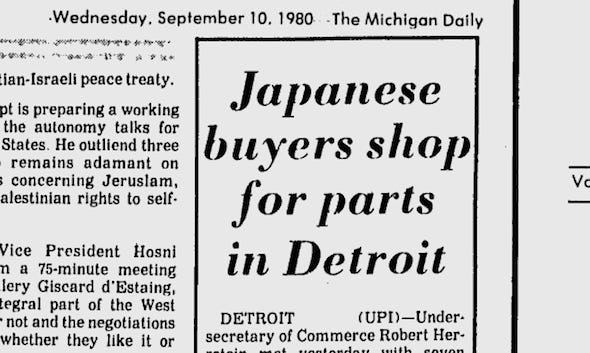
In the early 1980s, America’s once-dominant auto industry was faltering. The rise of Japanese automakers, who produced fuel-efficient, reliable, and affordable cars, posed a significant threat to American giants like Ford, Chrysler, and General Motors.
By 1981, American automakers held just 71% of the domestic market, down from 84% in 1978.
The shift toward more efficient vehicles in the wake of the 1970s oil crisis left U.S. manufacturers struggling to compete, and hundreds of thousands of autoworkers found themselves unemployed.
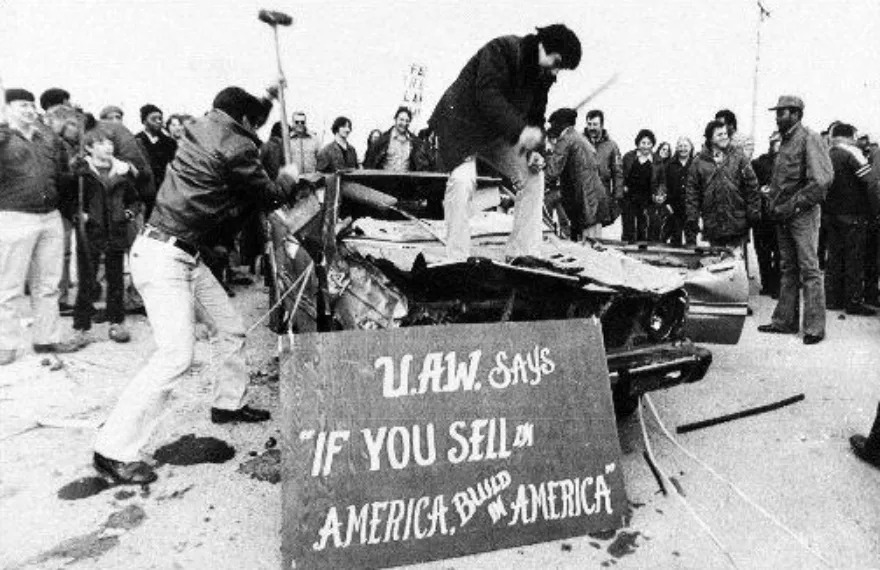
Layoffs spread rapidly as the industry fell into a tailspin. By 1981, employment in the U.S. auto industry had plummeted from 760,000 in 1978 to just 490,000.
Rather than critically examining their failure to adapt to consumer demands for smaller cars, U.S. automakers—backed by union leadership—scapegoated Japan, blaming foreign imports for their declining sales.
The Rise of “Buy American”
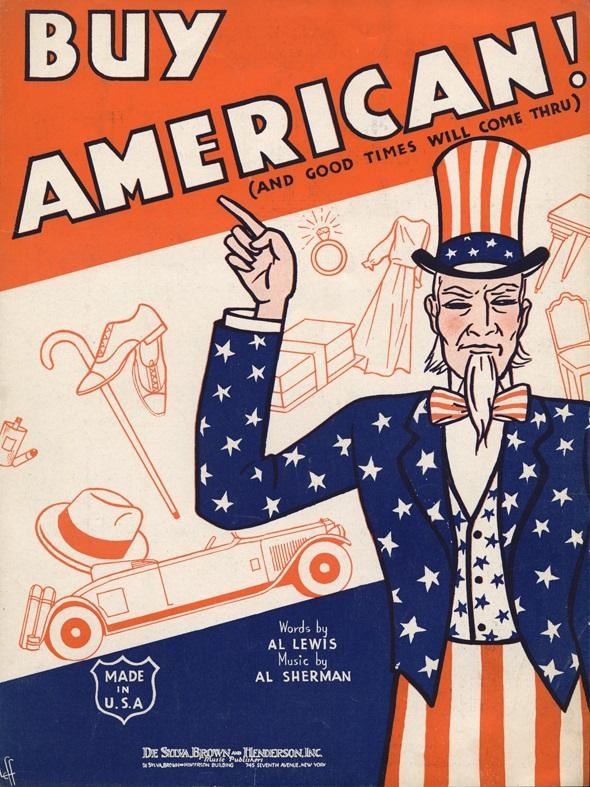
The “Buy American” campaign became a rallying cry for workers, politicians, and business leaders who believed American products should dominate the market.
But this patriotic slogan masked deeper problems in the U.S. economy. Signs reading “Unemployment — Made in Japan” appeared in Detroit and elsewhere, and bumper stickers decrying Japanese imports became widespread.
Union leaders, such as those in the United Auto Workers (UAW), encouraged these sentiments. Workers vented their frustrations in extreme ways—taking sledgehammers to Japanese cars became a popular form of protest.
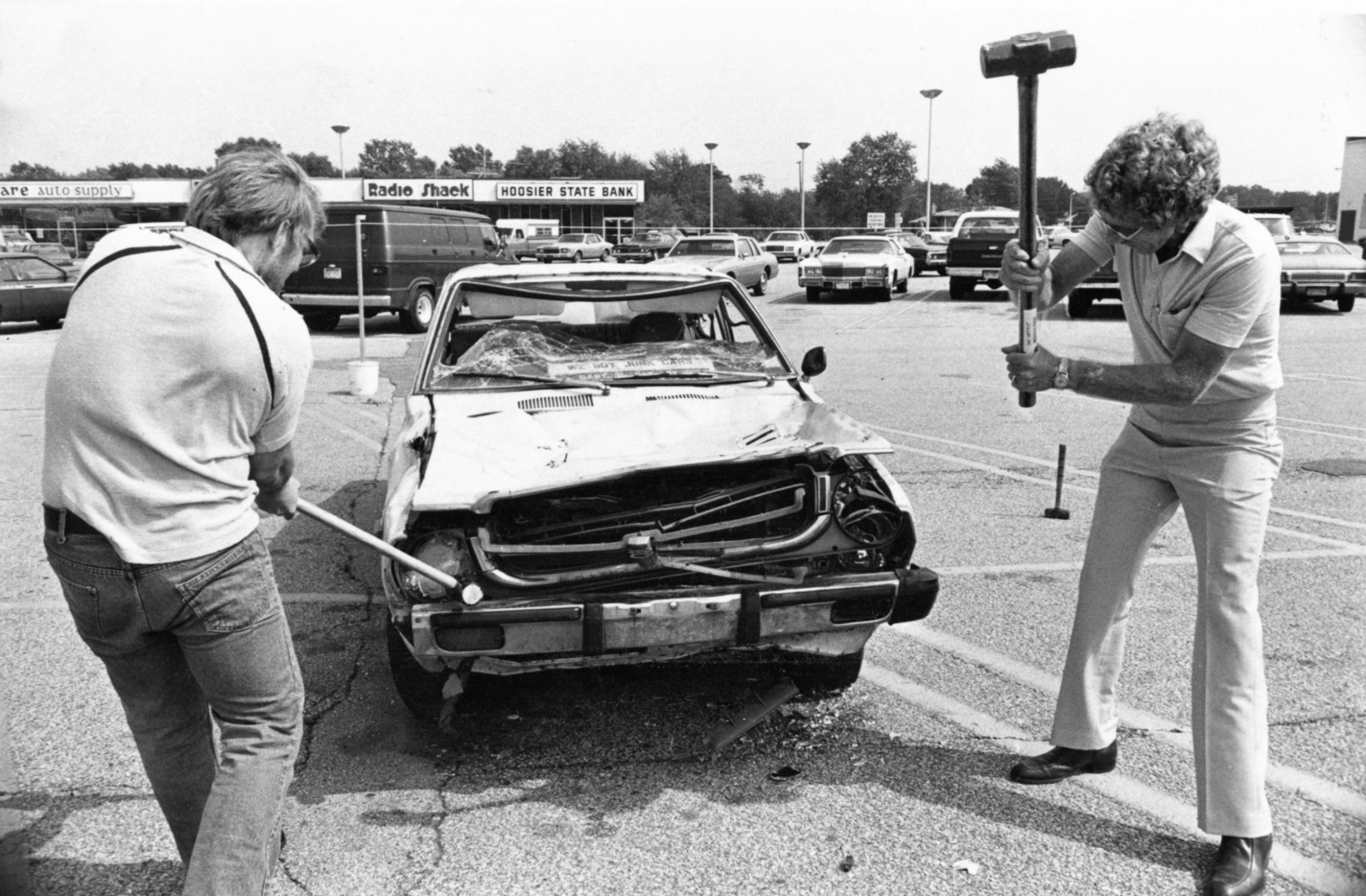
Yet, beneath the surface, many autoworkers knew the real issue wasn’t Japanese imports but rather the unwillingness of American companies to innovate.
Union leader Fred Wulkan noted that blaming consumers for buying foreign cars placed “responsibility in the wrong place,” as it was U.S. automakers who refused to adapt to changes in the industry.
Japan Bashing and Xenophobia
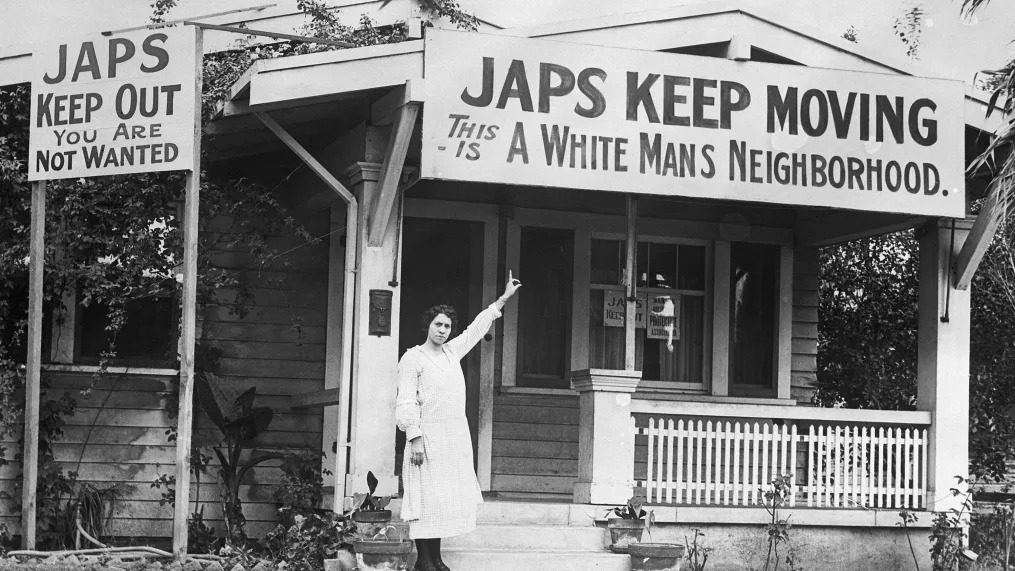
What started as a push to protect American businesses quickly turned into widespread hatred toward Japan.
The “Buy American” campaign sparked anti-Japanese ads and propaganda, some even comparing Japan’s economic success to the attack on Pearl Harbor.
Racist bumper stickers and slogans like “Honda, Toyota, Pearl Harbor” reflected this growing hostility. Unfortunately, this hatred wasn’t just words.

In 1982, Vincent Chin, a Chinese American, was tragically beaten to death by two Detroit autoworkers who thought he was Japanese and blamed him for the loss of jobs in the American auto industry.
Corporate and Union Complicity
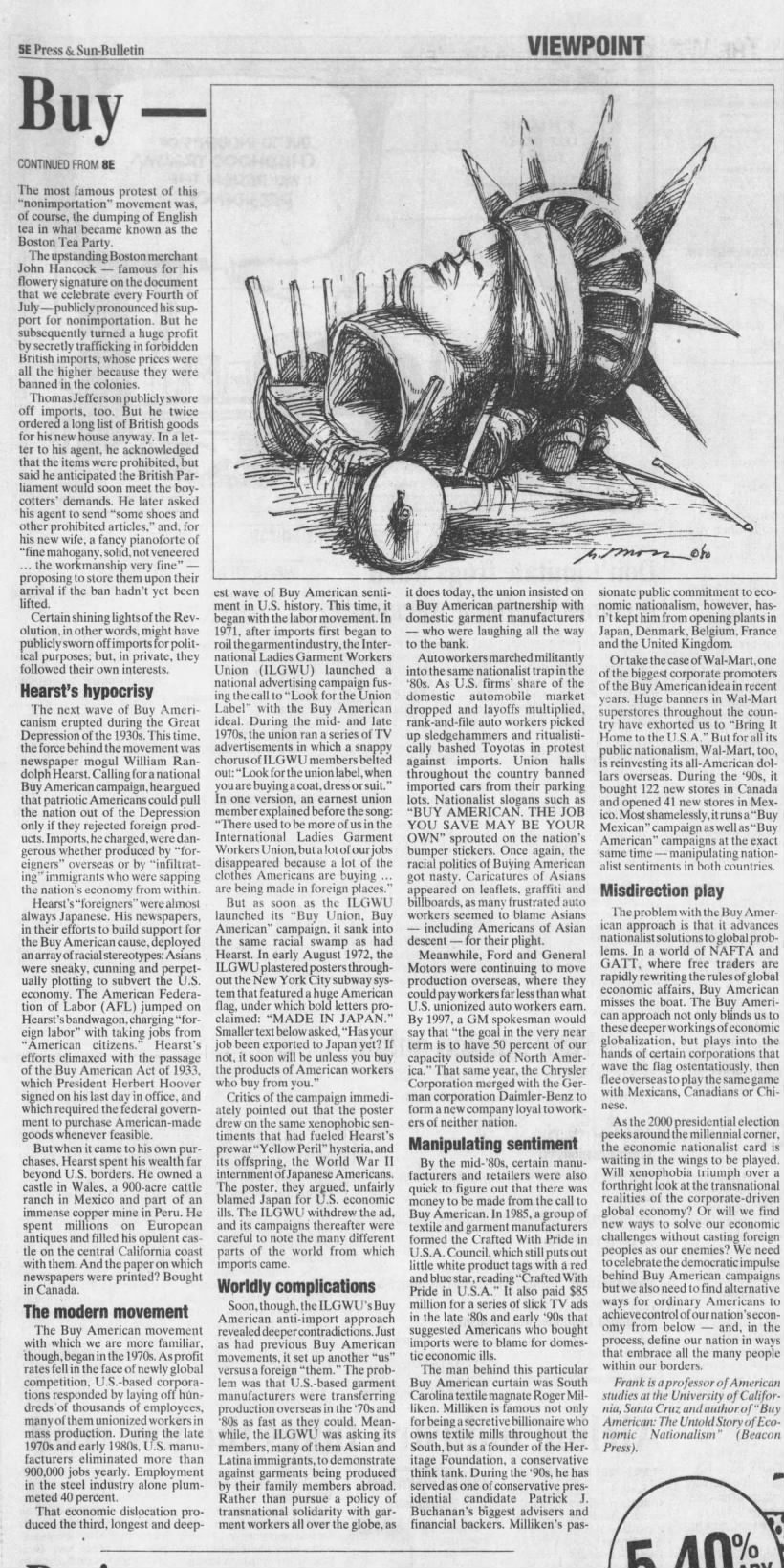
While the grassroots efforts to buy American goods gained momentum, corporate leaders in the auto industry were not as loyal to the nation as they might have seemed.
In fact, many American companies were simultaneously outsourcing jobs and relying on partnerships with Japanese automakers.
For example, Chrysler imported Mitsubishi cars, rebranded them, and sold them as Dodge and Plymouth models. General Motors did the same with Isuzu and Suzuki vehicles.
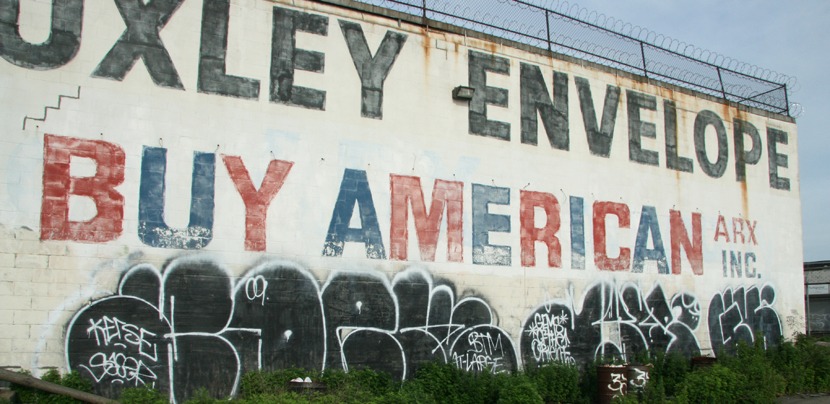
Additionally, union leadership largely avoided addressing the racism within the movement.
Earl Henry, president of UAW Local 598 in Flint, Michigan, stated, “We don’t blame the Japanese; we blame [General Motors chairman] Roger Smith.”
This division between the UAW leadership and its members highlighted a broader problem within the labor movement. As historian Dana Frank notes, “The grassroots Buy American movement served as a safety valve for autoworkers’ militancy.”
Rather than directing their frustrations at the auto companies that had outsourced jobs or mismanaged resources, workers were encouraged to take out their anger on Japan.
The Long-Term Consequences
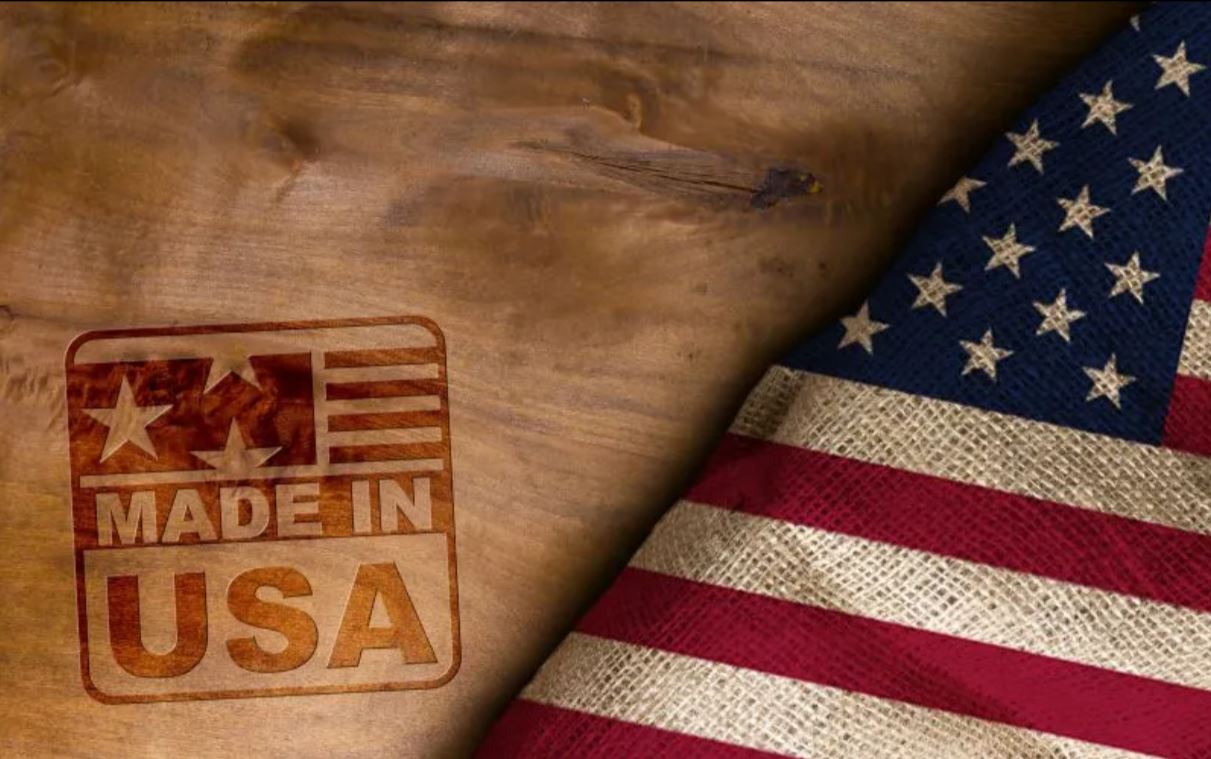
Ultimately, the Buy American campaign failed to solve the problems it aimed to address. Despite the fervent support, it did little to restore American dominance in the auto industry.
By the end of the 1980s, U.S. automakers still struggled to compete with Japanese manufacturers, who continued to innovate and capture market share.
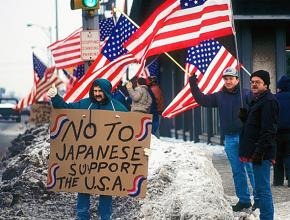
Worse, the Japan-bashing that accompanied the movement left a stain on America’s social fabric, deepening racial divides and fostering an environment of xenophobia.
Vincent Chin’s death stands as a stark reminder of the cost of misplaced economic nationalism. While some individuals may have found temporary satisfaction in smashing a Toyota with a sledgehammer, the broader impact of these actions was far more damaging.

